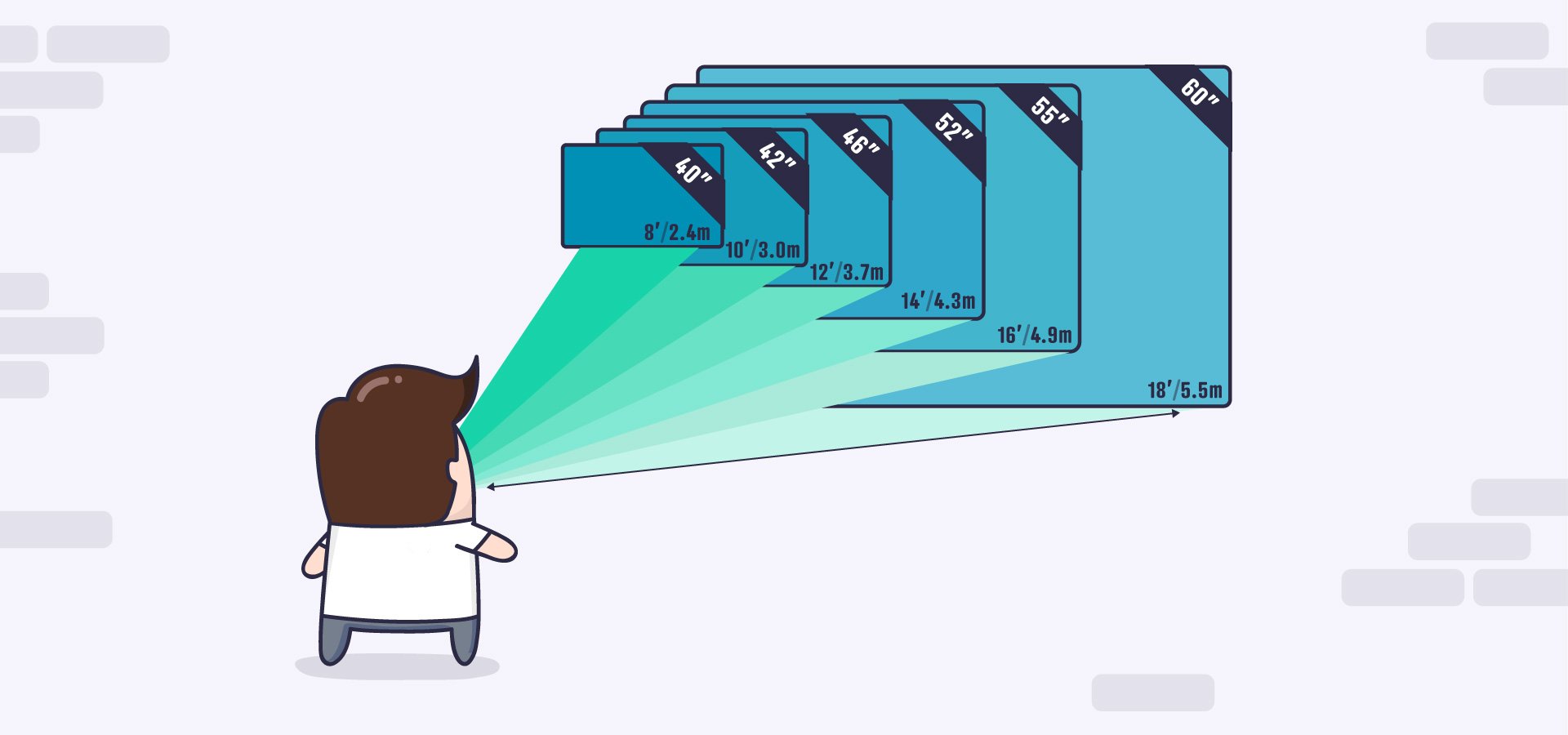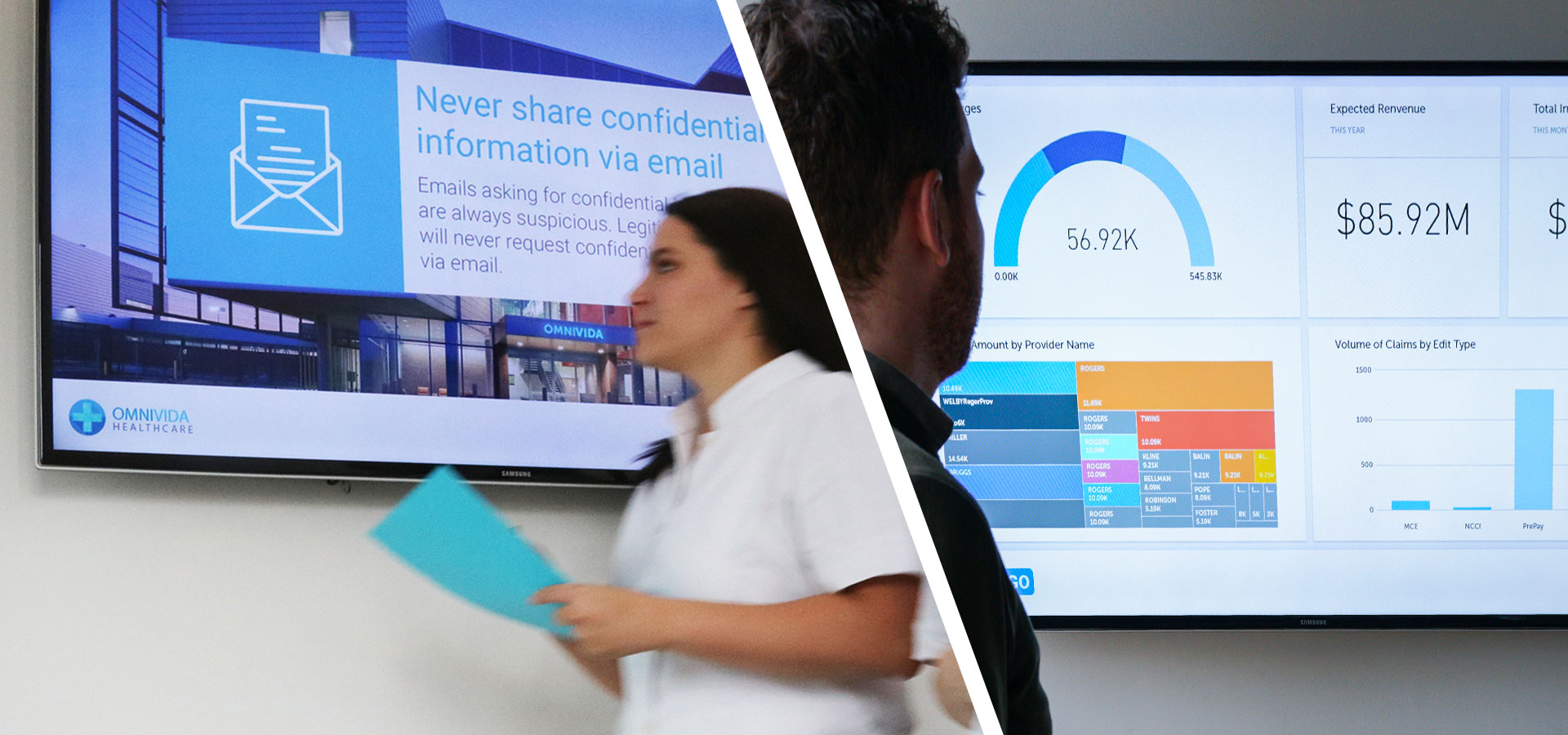How to choose the best screens for Digital Signage
Estimated reading time: 4 minutes
So you want to start with Digital Signage? Great idea! But you might wonder what you need to get started. As experts in the business of digital signage, we gladly share with you how you can get the perfect screens for digital signage at your business.
Unfortunately, there is no such thing as *the* best screen for digital signage. It all depends on your business and goal. Where will you utilize digital signage? What do you wish to accomplish with digital signage? Showing fast moving images, like sports, requires a different kind of screen than displaying more static content, like stocks or even a menu in a restaurant. Also consider the location of the TV. The greater the distance, the bigger the screen you need.
Size does matter
The size of the screen is the most important thing to consider. After all, the size of the screen determines whether people can see your content, read your message and notice your digital signage at all. You can determine the size you need by simply measuring the distance between the people you want to reach (e.g. your co-workers, clients or visitors) and the screen itself. When they are only 8 feet away, a 40-inch television screen is perfect. But when people are 18 feet away, you’ll need a 60-inch screen.
Type of screens for Digital Signage
Now, you can determine what kind of screen you need. Manufacturers love to slap all kinds of fancy abbreviations on their televisions, like LCD, LED, OLED, QLED and so on. Just forget about most of them immediately. OLED, for example, really is not suited for digital signage, as these screens are prone to ‘burn in’, just like Plasma screens. Stick with the classic LCD or newer LED screens for digital signage.
LCD and LED screens all basically work the same way and are perfect for digital signage. LED Screens, thanks to the more advanced backlight technology, are brighter while using less power and generating less heat. They often support the latest video technologies like 4K (higher resolution) and HDR (better colors). They are also more expensive than older LCD screens.
Higher brightness might be useful in well-lit environments and better resolution might be useful depending on your content, but at the end of the day even a cheap LCD TV will do the trick. Once again, it all depends on what you want to use it for. Ask yourself: do you really need to show corporate news or emergency communication in 4K HDR with the best technology money can buy? Probably not.
Additional hardware to display your digital signage
You should also think about how you want to show your content on the screen. Some digital signage solutions work with native apps available for only a few specific brands, while Netpresenter can do both, for example, works with software available on all Windows devices and Thin Clients. Great for TVs with integrated PCs, but with smart solutions like a budget friendly compute stick or a small form factor PC you only need a screen with a HDMI port to get started. Or you just use a Smart TV and install the Netpresenter Android app from the store.

What is digital signage?
It refers to display technologies such as TV screens or LED Walls to distribute information to reach predefined target groups. It can be used to communicate text and graphics with customers and visitors or employees. It usually concerns the information for a particular target group, in contrast to, for example, a television broadcast that reaches as large a group as possible.
What is a digital signage player?
A Digital Signage Player is a small piece of playback software installed on a computer that is connected to a TV on which you wish to display your content.
Do you also have tips for Digital Signage content?
Of course we do! Download our free infographic ’14 clever ideas to use digital signage for’
How is pricing calculated?
Our pricing is based on the tools you want to use and the number of employees or devices you want to reach. Whether you start with a single tool or combine multiple ones, our modular pricing offers maximum flexibility so you only pay for what you truly need. To further enhance your platform’s capabilities, optional premium add-ons are available and can be included in your pricing.
Do I need to schedule a demo to try Netpresenter?
No need to wait for a live demo — just take the self-guided tour at your convenience. It’s quick, clear, and available 24/7.
When should I take a Guided Tour instead of requesting a demo?
A Guided Tour is ideal when:
- You want a quick, on-demand overview without scheduling a meeting.
- You are early in the decision-making process and exploring solutions.
- You want to share an internal preview of the software with colleagues or stakeholders.
Or schedule a personalized free 30-minute demo with one of our consultants to discover the power of our platform. They would love to show you everything Netpresenter has to offer.


